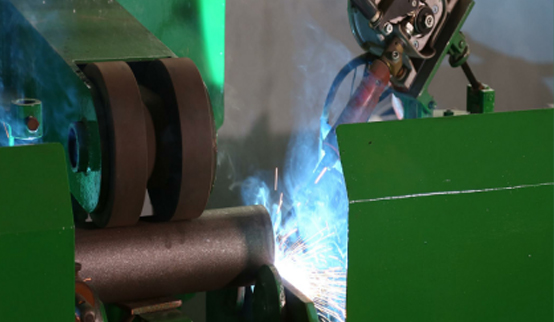 Afrikaans
Afrikaans  Albanian
Albanian  Amharic
Amharic  Arabic
Arabic  Armenian
Armenian  Azerbaijani
Azerbaijani  Basque
Basque  Belarusian
Belarusian  Bengali
Bengali  Bosnian
Bosnian  Bulgarian
Bulgarian  Catalan
Catalan  Cebuano
Cebuano  Corsican
Corsican  Croatian
Croatian  Czech
Czech  Danish
Danish  Dutch
Dutch  English
English  Esperanto
Esperanto  Estonian
Estonian  Finnish
Finnish  French
French  Frisian
Frisian  Galician
Galician  Georgian
Georgian  German
German  Greek
Greek  Gujarati
Gujarati  Haitian Creole
Haitian Creole  hausa
hausa  hawaiian
hawaiian  Hebrew
Hebrew  Hindi
Hindi  Miao
Miao  Hungarian
Hungarian  Icelandic
Icelandic  igbo
igbo  Indonesian
Indonesian  irish
irish  Italian
Italian  Japanese
Japanese  Javanese
Javanese  Kannada
Kannada  kazakh
kazakh  Khmer
Khmer  Rwandese
Rwandese  Korean
Korean  Kurdish
Kurdish  Kyrgyz
Kyrgyz  Lao
Lao  Latin
Latin  Latvian
Latvian  Lithuanian
Lithuanian  Luxembourgish
Luxembourgish  Macedonian
Macedonian  Malgashi
Malgashi  Malay
Malay  Malayalam
Malayalam  Maltese
Maltese  Maori
Maori  Marathi
Marathi  Mongolian
Mongolian  Myanmar
Myanmar  Nepali
Nepali  Norwegian
Norwegian  Norwegian
Norwegian  Occitan
Occitan  Pashto
Pashto  Persian
Persian  Polish
Polish  Portuguese
Portuguese  Punjabi
Punjabi  Romanian
Romanian  Russian
Russian  Samoan
Samoan  Scottish Gaelic
Scottish Gaelic  Serbian
Serbian  Sesotho
Sesotho  Shona
Shona  Sindhi
Sindhi  Sinhala
Sinhala  Slovak
Slovak  Slovenian
Slovenian  Somali
Somali  Spanish
Spanish  Sundanese
Sundanese  Swahili
Swahili  Swedish
Swedish  Tagalog
Tagalog  Tajik
Tajik  Tamil
Tamil  Tatar
Tatar  Telugu
Telugu  Thai
Thai  Turkish
Turkish  Turkmen
Turkmen  Ukrainian
Ukrainian  Urdu
Urdu  Uighur
Uighur  Uzbek
Uzbek  Vietnamese
Vietnamese  Welsh
Welsh  Bantu
Bantu  Yiddish
Yiddish  Yoruba
Yoruba  Zulu
Zulu Components and Functions of Belt Conveyor Systems Explained in Detail
Understanding Belt Conveyor Parts and Their Functions
Belt conveyors are integral components of many industrial operations, used extensively for transporting materials across various sectors. Their efficient design has made them a standard choice in manufacturing, mining, and distribution facilities. Understanding the parts of a belt conveyor and their functions is crucial for anyone involved in the installation, maintenance, or operation of this equipment.
1. Conveyor Belt The Lining Component
At the heart of any belt conveyor system is the conveyor belt itself. This continuous loop of material is typically made from rubber, fabric, or metal, depending on the specific application and the materials being transported. The primary function of the conveyor belt is to carry the load from one end of the conveyor to the other, providing a reliable surface that minimizes friction and maximizes efficiency. The choice of belt material affects not only durability and flexibility but also the ability to handle specific types of cargos, from heavy bulk materials to lighter packaged goods.
2. Drive System The Power Behind Movement
The drive system is paramount in any belt conveyor, as it provides the necessary power to move the belt and its load. This system typically consists of an electric motor, gearbox, and drive pulley. The electric motor initiates the movement, while the gearbox controls the speed and torque. The drive pulley, usually mounted at the discharge end of the conveyor, is where the belt is looped around and begins its journey back. Proper maintenance and selection of the drive system are vital to ensure continuous operation and avoid unexpected downtimes.
Idlers are rollers positioned along the length of the conveyor to support the belt and assist in material handling. They play a critical role in minimizing friction and ensuring smooth movement of the belt over its path. Idlers are often used in a troughing position to scoop materials onto the belt, increasing the system's transport capacity. Additionally, there are return idlers that support the empty belt as it returns to the drive end, helping maintain the belt's alignment and stability.
belt conveyor parts and functions

4. Pulleys Redirecting and Tensioning
Pulleys are essential components that change the direction of the conveyor belt and maintain the necessary tension. There are several types of pulleys in a belt conveyor system, including the drive pulley, tail pulley, and snub pulley. The drive pulley is responsible for propelling the belt, while the tail pulley supports the opposite end of the belt. Snub pulleys are used to change the direction of the belt or provide additional tension. Proper alignment and tension of the pulleys are crucial for optimal performance as misalignment can lead to belt wear and operational inefficiencies.
5. Belts Tensioning Devices Ensuring Belt Consistency
To maintain efficient operation, a belt conveyor requires a belt tensioning system. These devices ensure that the belt is neither too loose nor too tight, which can lead to slippage or excessive wear. Common tensioning methods include mechanical devices like screw tensioners and hydraulic systems, which provide precise control over belt tension. Regular monitoring and adjustment of belt tension are essential for extending the life of both the belt and the conveyor system.
6. Control System The Brain of the Operation
A conveyor belt system’s control system often includes a combination of sensors, controllers, and drives that facilitate automated operations. These systems can detect variations in load and adjust the speed of the conveyor accordingly. Modern conveyor systems employ advanced technologies like PLCs (Programmable Logic Controllers) and IoT (Internet of Things) for real-time monitoring and data collection, allowing for greater efficiency and predictive maintenance.
Conclusion
Belt conveyors are fundamental to modern industrial operations. Understanding the various parts—such as the conveyor belt, drive system, idlers, pulleys, tensioning devices, and control systems—and their respective functions is crucial for optimizing performance and ensuring longevity. Proper maintenance and operation of these components can reduce downtime, increase efficiency, and enhance overall productivity in material handling processes. Investing time in learning about these systems can significantly benefit anyone involved in conveyor operation or management.
-
Revolutionizing Conveyor Reliability with Advanced Rubber Lagging PulleysNewsJul.22,2025
-
Powering Precision and Durability with Expert Manufacturers of Conveyor ComponentsNewsJul.22,2025
-
Optimizing Conveyor Systems with Advanced Conveyor AccessoriesNewsJul.22,2025
-
Maximize Conveyor Efficiency with Quality Conveyor Idler PulleysNewsJul.22,2025
-
Future-Proof Your Conveyor System with High-Performance Polyurethane RollerNewsJul.22,2025
-
Driving Efficiency Forward with Quality Idlers and RollersNewsJul.22,2025





























